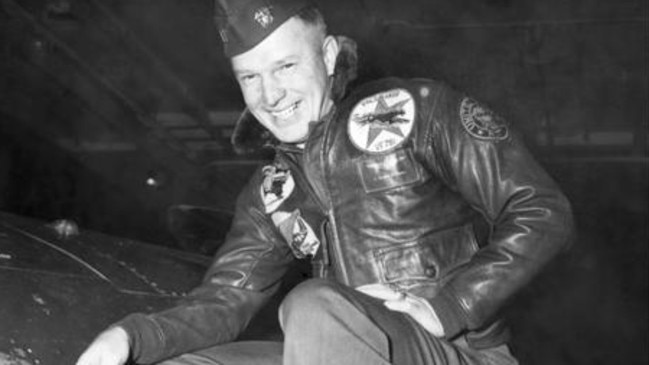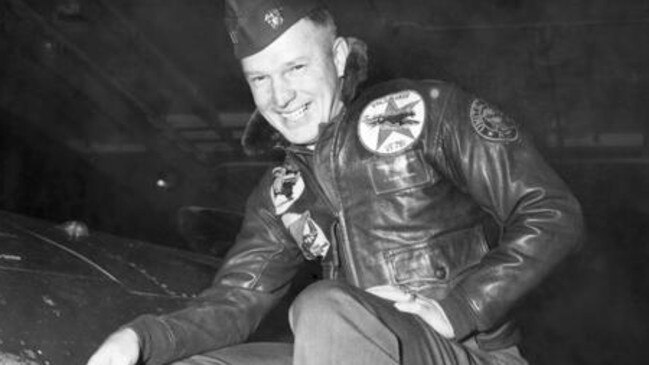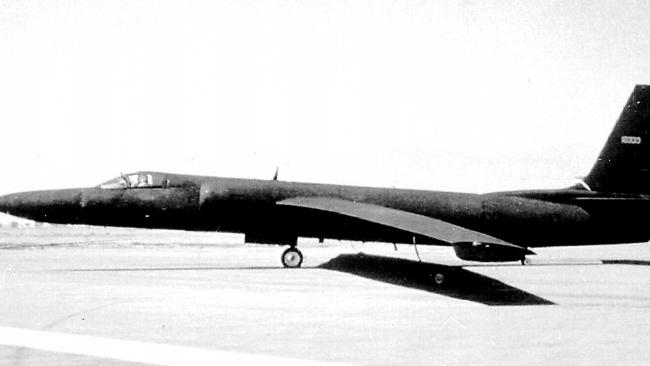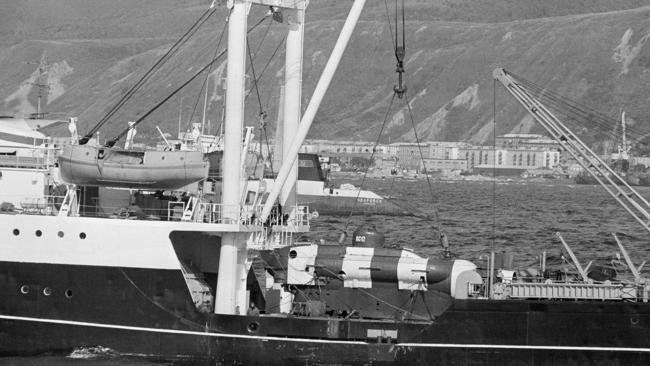Civilians lost in Flight 007 tragedy as Cold War tensions played out in the skies
Turkey’s downing of a Russian fighter plane evokes bitter memories of a Cold War fought in the sky.

Today in History
Don't miss out on the headlines from Today in History. Followed categories will be added to My News.
TURKEY’S downing of a Russian Su-24 fighter jet near the border with Syria has ramped up the enmity between the two nations.
It also evoked bitter memories of old Cold War rivalries.
It is the first time a member of NATO has shot down a Russian jet since the 1950s, the early years of icy relations between the Soviets and the West. It is also a reminder of the era when military and civilian aircraft were snatched from the skies, resulting in sabre rattling, finger pointing, cover-ups and denials.
One of the earliest such incidents was in November 1952, when the conflict between North and South Korea was still a hot spot in the Cold War. The US aircraft carrier Oriskany, sailing with three others in the sea of Japan on a mission to cut off North Korean supply lines, scrambled four F9F Panther fighter jets in response to the detection of Russian aircraft.
One of the Panthers, flown by Lt Royce Williams, engaged in an intense firefight with seven Russian MiG jets, shooting down four. America downplayed the shootdown and it caused more embarrassment to the Soviets who had been caught out aiding the North Koreans, something they preferred to do in secret.

A month later the Soviets again attempted to send a fleet of MiGs to Korea but were chased back by US jets, although this time no aircraft were shot down.
In March 1953 two US air force F84 Thunderjets accidentally crossed the border from West Germany into Czechoslovakia and one was shot down. The pilot, Warren G. Brown, parachuted safely back into West Germany but the incident stirred tensions across the Iron Curtain.
The Soviets shot down an American U-2 in 1960 when it flew over the Soviet Union, embarrassing the US. The US tried to cover up the incident and denied it had lost any aircraft but the Russians produced the captured pilot Francis Powers. Powers was later brought back to the US in a spy swap (the subject of the recent Tom Hanks film Bridge Of Spies).

The US had its turn to complain when the Soviets shot down an unarmed T-39 Sabreliner that accidentally strayed from West Germany into East Germany while on a training mission. The Soviets said the plane had failed to respond and they were compelled to shoot it down. The Americans were later allowed to retrieve the bodies of the three servicemen who died.
But the incident that many people remember of the Cold War did not involve the shooting down of a military aircraft. Korean Air Lines Flight 007 took off from New York in September 1983, en route to Seoul in South Korea, carrying 269 people, including US congressman Larry McDonald on his way to a function in Seoul.
A fault in the autopilot caused it to veer off course over Moneron Island, west of Sakhalin Island, in the northern part of the Sea of Japan, oblivious to the fact it has entered into Soviet airspace close to a secret naval base.
The Soviets were conducting missile tests in the area and tracked the plane for more than an hour. A Russian jet got close enough to see it was a civilian plane but the pilot convinced himself it could be a disguise or the plane was on a spying mission, because he could not imagine why a civilian plane would fly in that area.
Warning shots were fired but it was unlikely the airline pilots would have noticed. A Soviet Su-15 interceptor then fired on the civilian jet. There was global outrage but the Soviets initially denied the shootdown. US president Ronald Reagan denounced the incident as a “crime against humanity”.
The Soviets sent search and rescue missions but deliberately hindered American efforts to retrieve wreckage and investigate the shootdown. It took years of diplomatic wrangling before the full truth was known.

It was only in 1992, after the Cold War had ended, that the Russians handed over the black box and flight data recorder and released archive documents showing their culpability in the incident.
The paucity of information and the Soviet efforts at hindering searches of the area spawned dozens of conspiracy theories, including that the pilots had been on a spying mission, or that the shootdown was a cover story for a major air battle that had actually taken place. One of the most bizarre stories was no bodies were recovered because they had been eaten by giant crabs known to live in the ocean in that area.
dailytelegraph.com.au/todayinhistory
Originally published as Civilians lost in Flight 007 tragedy as Cold War tensions played out in the skies


